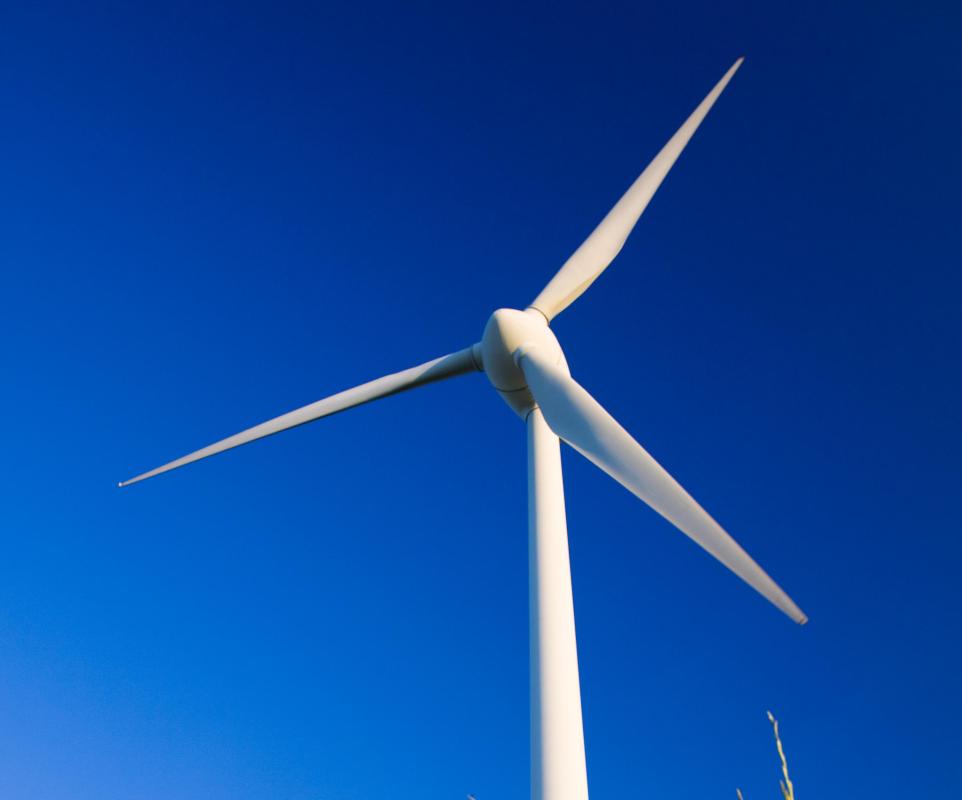At WiseGEEK, we're committed to delivering accurate, trustworthy information. Our expert-authored content is rigorously fact-checked and sourced from credible authorities. Discover how we uphold the highest standards in providing you with reliable knowledge.
How do Wind Turbines Work?
Wind turbines convert the energy of the wind into electricity. There are two basic components to a wind turbine: blades that are moved by the wind and the mechanical gears and electricity generator. As the wind moves the turbine blades, the rotor shaft moves the gears inside the gearbox. This movement creates energy, which is captured by the electricity generator and added to the power grid. There are two types of wind turbines: horizontal axis and vertical axis.
A horizontal axis wind turbine (HAWT) is very similar to a windmill in appearance. The electrical generator and main rotor shaft are located at the top of the tower. Wind sensors and servomotors are often used to automatically align wind turbines with the direction of the prevailing wind. The gearbox converts the large, slow rotation into the rotational speed necessary to generate electricity.

The blades of wind turbines are very stiff and made from a combination of hard plastics and light metals. The blades are installed in front of the tower and are usually pointed upwind. This is done to prevent the blades from being forced back into the tower and to accommodate turbulence forces
There are usually three blades on a wind turbine. They are between 65 to 130 feet (20 to 40 meters) long and lightly colored. In the event of high wind speeds, all wind turbines have a shut down feature. This feature is used to avoid damage to the wind turbine equipment.

A vertical axis wind turbine (VAWT) differs slightly from the HAWT. In this model, the generator and gearbox are located on the ground, at the base of the turbine. This shift allows greater flexibility and removes the need to point the turbine directly into the wind. The location of the mechanical equipment at the bottom of the turbine makes them more accessible for repairs and maintenance.

VAWTs are usually installed on the ground or on a building rooftop. The wind speed at this height is usually slower, and therefore generates less energy. One possible work around is to create a very long axis, which requires significant resources and materials.
Rooftop mounted units pick up wind that has been redirected over the roof by the shape of the building. This feature can significantly increase the wind speed. A rooftop turbine should be installed so that the blades are at least half the building height off the roof. This is the ideal distance to capture the most wind energy.
AS FEATURED ON:
AS FEATURED ON:













Discussion Comments
@ Parmparsley- One of the buildings on my campus has an array of Aerovironment Architectural wind turbines mounted on the roof. These rooftop wind turbines are great for urban environments because they only sit about eight to ten feet off the roofline. They only have a four-foot propeller span, and they each output around 450 watts of electricity. I cannot tell you what pricing would be though since it depends on the number in the set-up and the installation requirements.
If you want the beast of all residential wind turbines, you should look into the Bergey Excel. This turbine is a heavy-duty 10kW generator that can power a large home. It can spin in the worst of conditions, and it can start up in winds less than 8mph. The downside; the unit has a 22-foot tall rotor and a $20,000 plus price tag.
@ parmnparsley- A good option for a small wind turbine that could supply what you are looking for is the Southwest Windpower Skystream 3.7. This system is rudderless so it will turn in any direction. The system is very aesthetically pleasing, and it is fully integrated. You simply plug it in and you are grid tied in no time. The turbine and blades on this model will run you about $5000, but you will need to purchase the mount and installation separately. The system can crank out about 2kW continuously and peak at over 2.5. The startup wind speed is also a low 8 mph.
The whisper 500 by the same company is also a great option. It works well in choppy and high winds, turning out of these winds without losing the ability to produce electricity. This is done by an articulating rudder system. The system is rated at 3kW; enough to power a small to medium sized home, and it only needs 7.5 mph to spin the blades. This model can be grid connected, or hooked up to a battery bank. It is a little more expensive than the Skystream, but it produces more electricity and works well in unpredictable wind. I hope this helps.
What are some good home wind turbines, and how much do they cost? I live in an area that gets moderate to high sustained winds most of the year. I am interested in a system that can supply about 25% to 50% of my homes electricity needs, but I would also like an estimate on a system that could provide all of my electricity. I know that prices will vary by retailer, so I am content with a manufacturer’s price or a ballpark figure. Thanks wiseGEEKS.
Post your comments